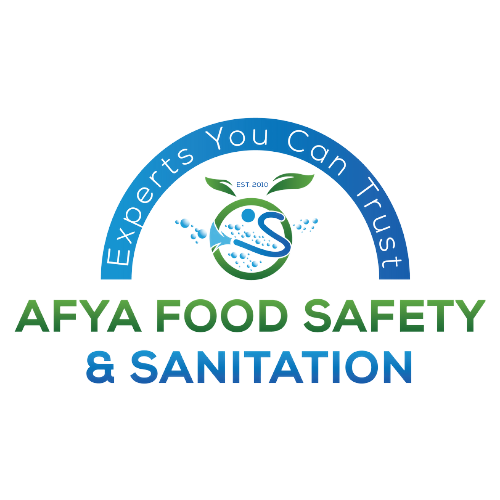
Please Wait For Loading

Please Wait For Loading
Maryland, MD USA
+1 (443) 666-9132
info@afyafoodsafety.com
Opening Hours: 9:00 AM - 5:00 PM
Copyright ©Afya Food Safety all rights reserved.
You can also reach us via Phone: +1 443 666 9132 or via Email:info@afyafoodsafety.com
Sanitation in Food Processing Plants
Sanitation is the most fundamental aspect of a food safety system within a food, dairy and beverage processing facility. An effective sanitation program is vital for protecting food from harmful bacteria, poisons and foreign bodies which cause contamination and reduce microbiological induced corrosion (MIC) in processing systems to produce a safe product.
Importance of Proper Sanitation
The Food Safety Modernization Act (FSMA) requires food companies to have sanitation as a preventive control to address hazards. Sanitation processes vary depending on the product being produced. The main objective of a sanitation program is to develop, document and continuously implement procedures and practices that provide a safe and sanitary environment for food processing.
Good Manufacturing Practices (GMP’S) require that buildings, fixtures, and other physical facilities of a food plant are maintained in a sanitary condition; cleaning and sanitizing of utensils and equipment protects against contamination of food, food-contact surfaces, or food packaging materials; and that cleaning compounds and sanitizing agents are free from undesirable microorganisms and are safe for use.
The Food and Drugs Administration(FDA) inspectors monitor, verify, validate, and take corrective action measures against companies that are in violation of the GMP’S.
Elements of a Good Sanitation Program
Training – An integral part of implementing the sanitation program is ensuring that everyone is well versed in the scope and strategies of your sanitation program. The staff should receive regular training on the sanitation principles; company GMP’s; proper use of equipments, tools and chemicals used for sanitation; personal hygiene practices and proper use of personal protective gear.
Cleaning and Sanitizing – Cleaning and sanitizing are the basic elements of a viable sanitation program. Cleaning eliminates soil particles from surfaces by mechanical, manual or chemical methods. Sanitation involves the treatment of a cleaned surface with a chemical agent to destroy disease/spoilage-causing organisms. The chemicals used to clean and sanitize the facility depend on the products, the objectives of the sanitizer and the cost. Non – rinse sanitizers are most effective for food plant operations because they remain on the surface until production is initiated
Cleaning protocols and schedules– Schedules and protocols are put in place based on the plant’s needs. Cleaning protocols provide instructions on how to clean various surfaces and equipment while schedules provide guidance on how often cleaning and sanitizing should take place. The size of the facility, available staff and the types of products and equipment available determine the style of schedule that will be implemented. The master cleaning schedule should include cleaning plans for the floors, ceilings, walls, and drains; cleaning dates; cleaning instructions and a checklist for each step.
Design and Equipment- The sanitary design of the facility and equipment is a major contributor to making the sanitation program effective. A sanitary design makes cleaning faster and more efficient. A hygienic plant design for food processing and handling operations should be accessible for all maintenance, cleaning and inspection procedures; cleanable; Free of unsealed hollow areas that could collect product or liquid and able to facilitate validation of cleaning and other sanitary protocols.
Waste Management – Food processing wastes contain a high amount of organic components that can be converted into energy. All though non-toxic, food processing waste has significant potential to pollute land, air, and water because of its high Chemical Oxygen Demand (COD) and volume. Proper waste storage is therefore vital in ensuring plant sanitation.
Verification – This is a high priority in the food industry. The verification and pre-operational inspections should be conducted by persons properly trained on what to look for. Verification process evaluates and assesses the effectiveness of the sanitation program. The techniques used for verification and documentation include microbial testing, ATP Testing, using dyes depending on the plant requirements.
learn more here.
Sources:
https://www.fda.gov/home
https://ispe.org/initiatives/regulatory-resources/gmp
https://www.foodsafety.com.
Related Posts
Categories
Antibiotic Resistance: A Growing Threat to Food Safety
April 17, 2025Understanding Cross-Contamination: A Major Food Safety Risk
March 31, 2025Calender